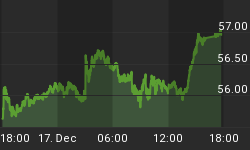In part one of this series, we addressed a few speculative investments that might rise over the next few years. We would like to stress that most assets will fall in a deflationary environment. We have therefore focused on preserving portfolios with U.S. Treasury Bills held at more secure financial institutions.
Preserve what you have, because when the housing market lands with a thud, the bargains will be there. For instance, one quarter of the land in Mississippi went to auction in one day during the Great Depression according to Ken Burns. We now turn to markets that we see as compelling at the bottom.
The Yellow Brick Road
As we mentioned in January, "During the period from 1980-2000, Gold experienced a bear market. As you can see from the chart below, after the parabolic rise that ended in 1980, the gold price fell for 20 years." Markets that have been completely ignored for two decades interest us. After a 20 year bear market, gold has recently done very well.

If you look at the chart below, the Taiwan stock market has been in a correction since 1990. The Japanese stock market has also experienced the same fate. We expect both of these markets to bounce in 2009 but sell-off again with the global markets into late 2010. From this twenty year bottom, we expect these two markets to perform very well.
To be considered 'buys,' we would like to see a torrent of horrible news coming from these countries. We would also like to see investors finally giving up on their stocks (i.e. 1979's major news publications declaring the death of equities or 1988's individual investors avoiding stocks as if they are poison, etc.). While the mood is currently sour, investors are not selling. When investors finally give up at the bottom and sell, we will recommend buying.

Jim Rogers and Marc Faber
We couldn't discuss investing in Asia without mentioning the 'Statler and Waldorf' of the investment world. Jim Rogers recently stated: "We'll see if it's an overlooked trade or not. I haven't heard many people talking about Taiwan in 15 to 18 years." Dr. Faber also relates in a recent Bloomberg video that he is looking at Japan as well. We hope these two curmudgeons retire soon.
***More For Clients and Subscribers***
What's Next
Reports that state if the bailout does not pass, the 'U.S. will crash' are ridiculous. We should just pass legislation to decree that everyone will be rich. Easy enough. We expect the U.S. Treasury's description of a 1929-style sell-off to occur regardless of actions in Washington. We may have reached the 'line in the sand' described last March. More bank failures should also be expected. Banking holidays will only add to the panic. Recent gas shortages here in the South have provided us with a dry run for the reaction to bank closures.
"It's like ants to a picnic and they feed until it's all gone," - Tom Crosby, AAA.
If you would like more information on our services, please see our recent Protect Your Funds Now Redux. This is one of those instances when making it through the storm is good enough.
At Lamont Trading Advisors, we provide wealth preservation strategies for our clients. For more information, contact us. Our monthly Investment Analysis Report requires a subscription fee of $40 a month. Current subscribers are allowed to freely distribute this report with proper attribution.
***No graph, chart, formula or other device offered can in and of itself be used to make trading decisions. This newsletter should not be construed as personal investment advice. It is for informational purposes only.















